|
Before you can perform a jump start, you'll need a good set of
jumper cables. Jumper cables should be one of the first things you
purchase after getting a new car and can easily be found in any auto
parts store, many hardware stores, or in a department store like
Wal-Mart or Target. The cables often come in varying lenghts;
you'll want to pick cables that are long enough to connect two cars
without stretching or straining, but short enough that they aren't in
the way - roughly 10 to 15 feet is a good length. Once you've
acquired cables, keep them in your trunk or rear hatch - they won't do
any good if you don't have them in the car! |
|
First, park the two cars either side by side or nose nose.
Once the cars are in position, turn off anything in the weak-batteried car that uses
electricty: headlights, overhead lights, wipers, turn signals, radio,
etc. |
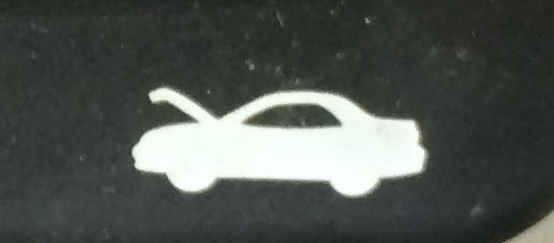
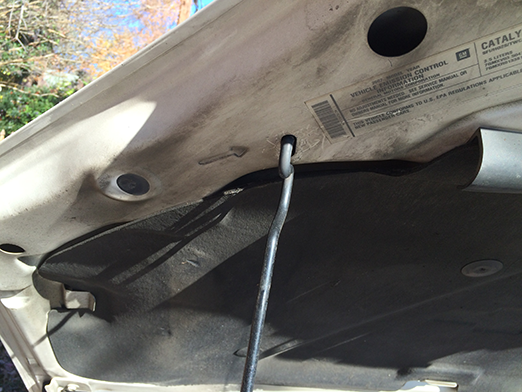
|
The next thing you'll need to do is open the hoods of both the car
that needs to be jump started and the car that will be donating the
power. To do this, just pull each vehicle's hood release lever, which
is usually located somewhere below the steering wheel and has a drawing
of a car with an open hood.
The hood will then pop up slightly. To release it the rest of the way, move to the front of the car, reach under the middle of the hood and press the second hood release lever; it might help to kneel down to the same level as the hood so that you can see this latch. With the hood now completely released, use the hood prop arm in the car's engine bay to hold the hood fully open.If you have trouble locating
either hood release or the prop arm, consult the car's owner manual.
|
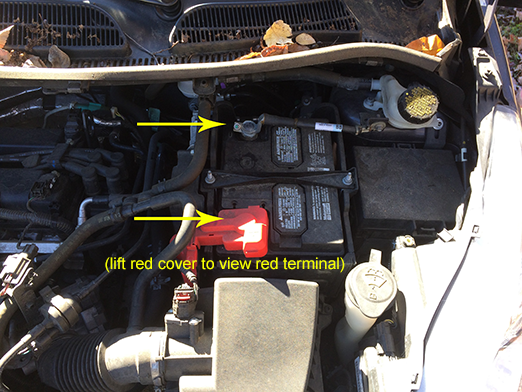

|
Once you've got both hoods open, find each car's battery. In
some cars, you'll be able to spot the battery right away: it will be a
plastic box with one red terminal and one black terminal and a
cable connected to each. In some cars, the battery is beneath a hard
plastic cover, which will be marked on top with a battery symbol (see left). Once you remove the battery cover, the battery will appear
as just described above. The red terminal is the battery's positive (+)
terminal, and the black terminal is the battery's negative (-) terminal.
At this point, check and see if the cables attached to the troubled car's battery posts are securely attached. If either attachment is lose, tighten it and then attempt to crank the car again. If that doesn't help, proceed to the next step. |
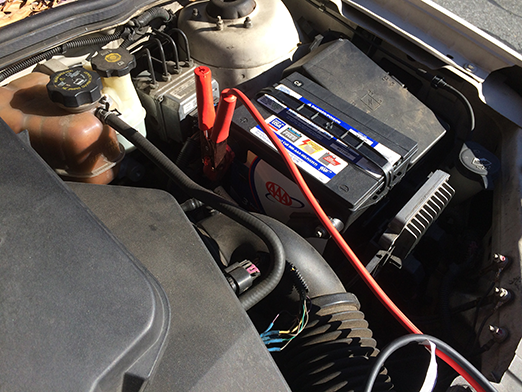 |
You'll notice that your jumper cables have one red clip and
one black clip at each end. Attach one of the red clips to the
red/positive battery terminal of the donor car. NOTE: once the cables are attched to any part of a
battery, do not let the metal clipping ends touch! |
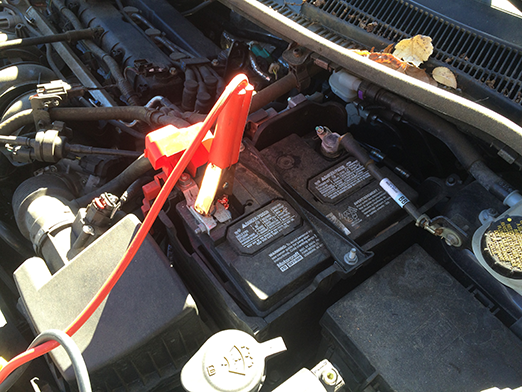 |
Now, move to the underpowered car and connect the opposite red clip
to the red/positive terminal of the weaker battery. |
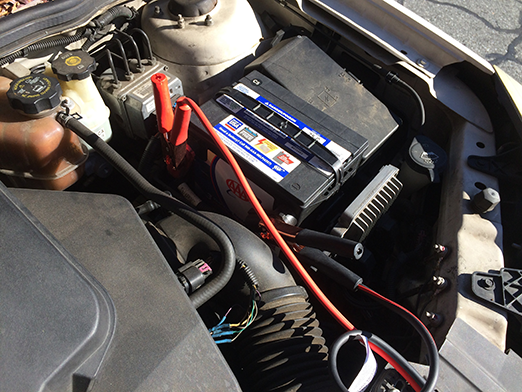 |
Moving back to the donor car, connect the black clip on that end of
the cables to the donor car's black/negative battery terminal. |
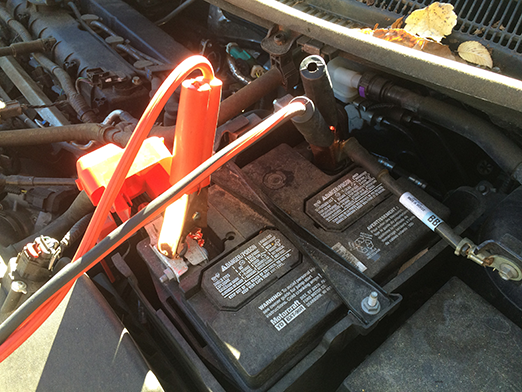 |
Attach the final black clip to an unpainted metal surface under the
hood of the
car that needs to be jump started. If no suitable surface is available,
you may attach the final black clip to the black/negative (-) terminal
of the dead battery. |
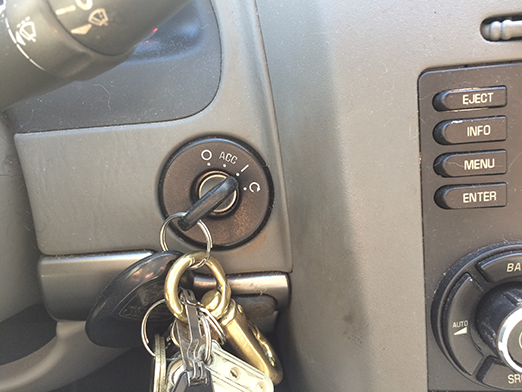 |
After checking to make sure that both vehicles are placed either in
Park or Neutral with the parking brakes engaged, crank the car with the
good battery. |
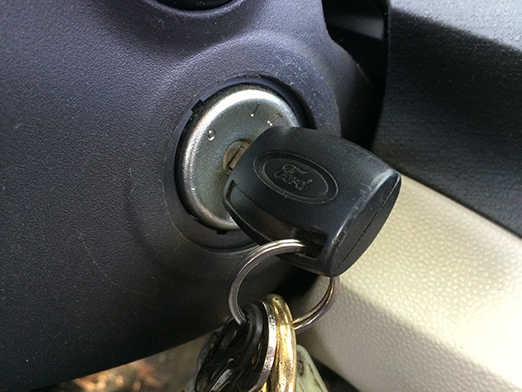 |
Now try cranking the other car. If the battery is only
slightly weak, it might start right away. If so, congratulations!
If not, let the donor car run for a few more minutes and then try again,
this time revving the engine of the donor car slightly while the weak
car is being cranked. |
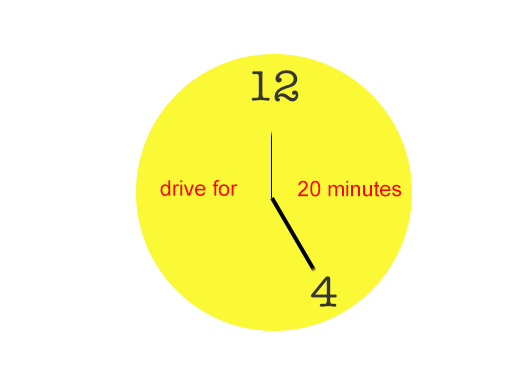 |
Once you've jump started the weak car, remove the four clips from
the two batteries in the reverse order from which they were applied, close and secure both hoods, and then drive
the weaker car around for at least 20 minutes to recharge the battery.
If you turn the car off before this time, the battery might be
insufficiently charged, which could require another jump start. |
If the car is driven for at least 20 minutes but wont's crank again
after it has been shut off, you might have a failing alternator; the
alternator is the part of the car that converts mechanical energy from
the engine into electrical energey to recharge the car's battery.
|
If you can't get the jump start to work, recheck all of the
connections from the jumper cables to the car batteries. If the
jump start still won't work, the affected car could have a bad battery
or a bad starter.
|
 |

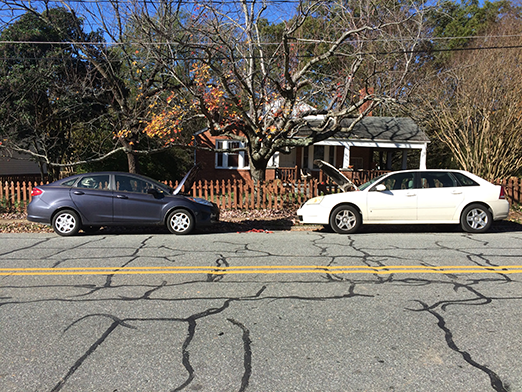
![]()


![]()







